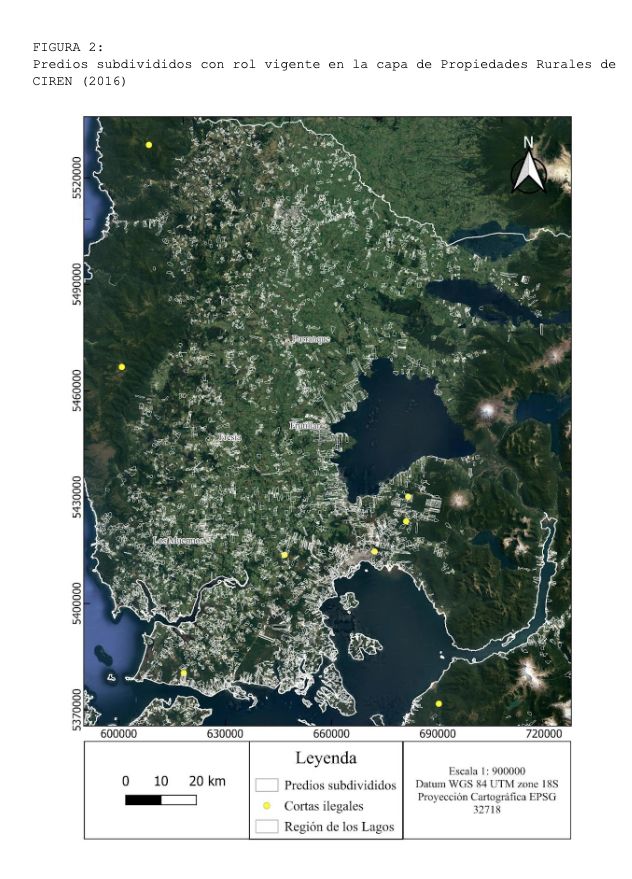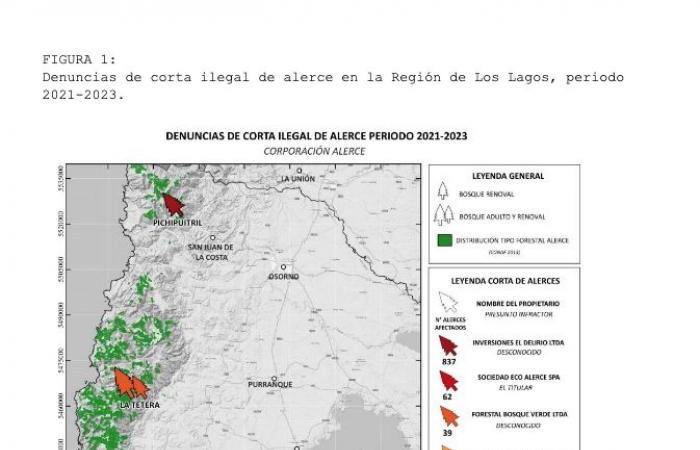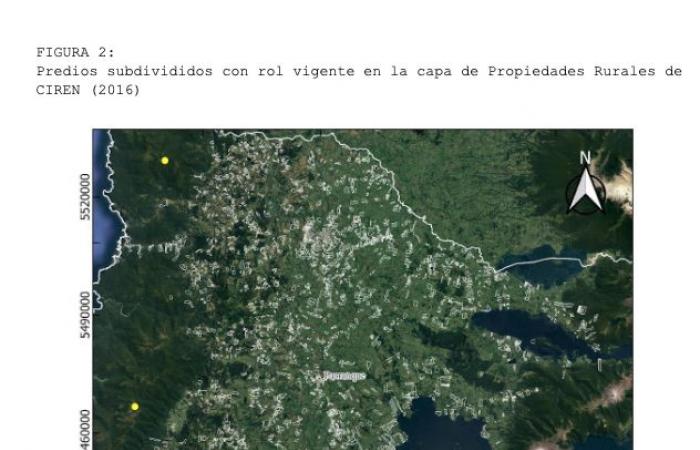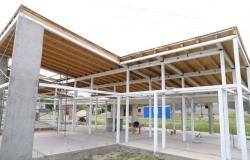Urban expansion, subdivisions and road projects add to the many risks that this species of long-lived tree faces in our country, the cutting or removal of which is prohibited. Its preservation is complex, and the interests against it are numerous, explain the authors of the following column for CIPER: «There are eight illegal fellings of larch reported by CONAF in the period 2021-2023, of which three correspond to real estate projects. ; two, to works associated with roads or definition of property boundaries; and three directly to logging exploitation. To date, only one of these eight cases has been sentenced, although it is unknown if the fine was paid.
ANDThe larch is an ancient, slow-growing tree that can live more than 3,600 years, and is in danger of extinction, as recognized nationally and internationally. Because the indiscriminate cutting of larches and intentional fires destroyed more than half of the existing forests, this species was declared a Natural Monument of the State of Chile in 1976, to ensure its preservation.
The larch has a very restricted distribution, found mainly in the Coastal and Andean Mountains, and in the central valley of the Los Lagos Region (there are also small populations in Argentina), making it an endemic species. of the Valdivian ecoregion. In the central valley near Puerto Montt, the last fragments of this species remain in non-cordilleran sectors. These few fragments of They are highly threatened by the expansion of the city of Puerto Montt, which is destroying them. Various research has shown that these larch populations are genetically unique and different from those found in both mountain ranges. Given the climate crisis and the loss of biodiversity that we are experiencing, it is even more relevant to protect the larch from its historical threats (such as illegal logging and forest fires) and from the new threats that arise. The latter include road projects, urban expansion, subdivisions and real estate speculation (associated with the above). Speculation consists of investing in buying large fields at low prices, and then selling several dozen smaller plots at a substantially higher price. [ver columna previa en CIPER-Opinión: “Parcelas de agrado: el agrado de pocos a costa de muchos”].
In the parcels, larch trees are cut and uprooted, both in the construction of roads and in the clearing of vegetation from the lots to be sold. Drainage ditches are made at the edges of roads, which dries out nearby areas, weakening or killing surviving larch trees. In some cases, they are simply run over and buried with large backhoes. The above affects trees and larch plants of
A little more than a year ago, the threat posed to larch forests by the construction of the T-720 route through the Alerce Costero National Park emerged. [foto superior]which was being promoted by the Ministry of Public Works, authorities in the area and the government of President Gabriel Boric itself. [ver columna previa de los autores en CIPER-Opinión del 20.01.2023]. Although this threat was reduced when the project was withdrawn from the Environmental Impact Assessment System in October 2023, the current government is still exerting pressure to continue advancing in its completion. The efforts are advancing through the formation of a “technical table”, made up mainly of political entities, and through a proposal to study vegetation and soils, requested from the State Forestry Institute-INFOR, which was recently presented to the Regional Government of Los Ríos for its financing. All this despite the argued opposition of the scientific community and non-governmental organizations such as Corporación Alerce, which presented detailed reasons based on scientific evidence that show that this route strongly threatens larch trees, and that there is no interest or national priority to achieve it [URRUTIA et al. 2023; URRUTIA y MIRANDA 2023]. With this threat still latent, It has been possible to confirm another that is advancing steadily against these forests, such as the felling of larch trees in order to enable land for subdivisions, especially in the surroundings of Puerto Montt. [FIGURAS 1 y 2]. Although these parcels may not legally constitute an urbanization, under certain exceptions indicated in Decree 47 of the Ministry of Housing and Urban Planning, buildings with residential use would be permitted.
When analyzing the data on illegal logging in the Los Lagos Region for the period 2021-2023 (data requested for transparency from CONAF; FIGURE 1), Two of them of a serious nature draw strong attention, as they affected large trees probably hundreds of years old. One of them happened near the El Tepual airport, in Puerto Montt, and affected 62 larch trees. The second corresponds to a felling that affected 39 larch trees, which was carried out for logging purposes on the property of Forestal Bosque Verde Limitada, in the commune of Purranque. In addition to the felling of adult trees, an illegal felling of 837 smaller larches, whose age is unknown, was confirmed to enable a property demarcation strip in the Commune of San Juan de La Costa. The location of these cuttings is shown on the map in FIGURE 1.
In total, there are eight illegal fellings of larch reported by CONAF in the aforementioned period, of which three correspond to real estate projects; two, to works associated with roads or definition of property boundaries; and three directly to logging exploitation. To date, only one of these eight cases has been sentenced, although it is unknown if the fine was paid.
As citizens dedicated to researching, protecting, disseminating and educating to ensure the conservation of larch forests, we are concerned about the continued destruction of these forests, an emblematic species of high ecological and scientific interest, as well as a priority in terms of their national and world. For everything stated here, we call to report any impact on this natural monument and its habitat. It is currently evident that real estate expansion and speculation is considerably affecting the places where this species lives, so it is important that as citizens we are attentive to making the respective complaints to CONAF. We also call to stop the buying and selling of plots in places where larch trees and/or vestiges of them exist; especially, in the surroundings of Puerto Montt and Puerto Varas, [ver FIGURA 2 y columna previa en CIPER-Opinión: “Derecho real de conservación: ‘Parcelaciones verdes’ contra la protección ambiental»].
On the other hand, we call on the State of Chile to take effective care of our natural heritage:
i) preventing permits for parcels from being granted in places that are the habitat of the species; That is, the Agricultural and Livestock Service (SAG) does not issue these permits in places where there are species in conservation categories such as larch;
ii) providing adequate financing for the supervision of the cutting of our native forest and species in danger of conservation, especially considering the unbridled real estate expansion in rural sectors; and
iii) applying the full rigor of the law and the fines established by CONAF so that illegal fellings are punished in an exemplary manner, hopefully by courts of higher hierarchy than those of the Local Police (which are the ones responsible for hearing these cases). , without discounts or exemptions, even if there is a self-report by the offenders. Although the fines applied will never compensate for the damage caused by the cutting of larches and the impact on their habitat, it is necessary that they be applied in their entirety, and that they be increased at a legal level, including effective imprisonment, so that hopefully those who cut larches Without scruples, do not dare to irreparably affect this heritage of global importance again.

*This column is signed by: Rocio Urrutia-Jalabert, Antonio Lara, Álvaro Gutiérrez, Jorge Herrera and Alejandro Miranda.








